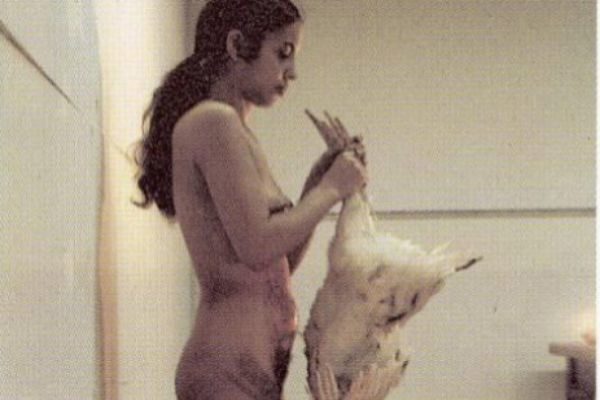This woman was always on the wire. Where life and art are confused, the living and the inert, the man and the woman, the sacred and the profane, at all those crossroads, Ana Mendieta installed her body. In each of those rituals it was the officiant, but also the offering, the one that looked and looked at , the one that appeared and the one that disappeared. Until the end.
Mendieta was born in Havana on November 18, 1948, being the second of three brothers. His father, Ignacio Mendieta, was heavier than being a devout Catholic than his work in the post-revolutionary State Ministry, so it did not take long to join the counterrevolution. Meanwhile, a Miami priest had organized a secret plan called Peter Pan: some 14,000 children were transferred to the United States, being in the custody of the Catholic Church. Ignatius, fearful of possible reprisals, decides to send his daughters to that Neverland Land.
However, the two sisters are separated. An Iowa family welcomes Ana, who is then 12 years old. Under that sky of ethanol, the girl has to endure teasing because of the color of her skin and her accent . He spends five years without seeing his mother and brother; 18 years without seeing the father. Loneliness opened a passage in his soul, which the young woman went through to become an artist.
It makes painting his first home. He enrolled in Fine Arts at the University of Iowa. There he meets the German Hans Breder, one of his mentors and then lover. Soon the pigment and the support become a new frontier. She states: «In art the turning point was in 1972, when I understood that my paintings were not real enough for what I want the image to convey, and when I say real I mean that I wanted my images to have strength, to be magical ». That is why he participates in two works directed by Robert Wilson: Handbill and Deafman Glance. There he learns that slowness can be tumultuous.
Everything is accelerated: recordings, pieces, interventions, actions, etc. He places his body at the center of the experience: he crushes it against the crystals, deforms it, confuses it with the stone.
Since then, he presents the blood as a credential. In Chicken Movie Piece (1972), Mendieta, naked in front of a white wall, drains the blood of a decapitated chicken at the height of her pubis. The influence of Viennese actionism is obvious, but also that of the pagan timpani of his native Cuba. Some will say that he has entered the school of primitivism, of body art , of "art of the earth." She just shakes the labels, even those that define her as a "Latin artist." All his work is a blast of identity, an assumption that everything is transition. In Facial Hair Transplan t (1972), Mendieta becomes a woman-man subject, cutting a mustache and beard to a friend to incorporate them into her own face .
In 1973 he recorded the piece Sweating Blood . With the eyes closed and the head raised, we see how the blood slowly slides down his forehead and then the jet is fanned. There is no pain in his expression. Is she a woman who has killed or who has been killed? That same year he heard the news of the rape and murder of a nursing student. It is the origin of Rape Scene , perhaps the best known piece. Turn your own apartment into the scene of outrage. She stands, leaning on a table, while blood runs through her legs and forms a puddle. This artistic response to violence against women ended up becoming a sad prophecy of the last day of his life.
In the late 70s he moved to New York. There he meets the minimalist poet and sculptor Carl Andre. From the beginning, that relationship was dirty with dynamite dust. However, the couple marries in early 1985. On September 8 of that same year, the neighbors hear a loud argument. Soon, Mendieta's body rushes through the window of that 34th floor . After three years of trial, Andre is acquitted for lack of evidence. According to New York justice, Mendieta's death was suicide, despite witnesses who heard the fight. He was only 35 years old. Since then, each exhibition of Andre come companions to enliven the memory of Mendieta and demand justice. Ana Mendieta's legacy survives in museums around the world, but above all in the other creators who have followed her trail; that of a woman who turned her body into a complaint . Until the end.
According to the criteria of The Trust Project
Know more- Cuba
- culture
- Art
- theater
Clothes hanging Phantoms of the theater and other ghosts
Clothes hanging from the Arch removes and puts Shakespeare
When museums were museums

